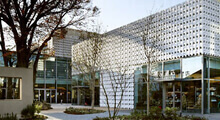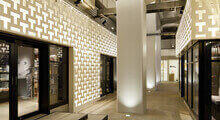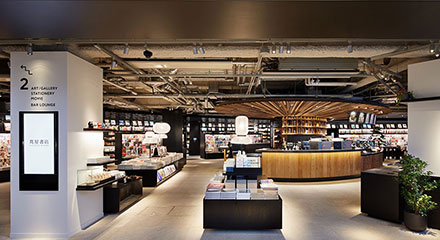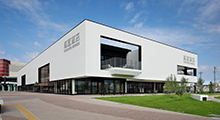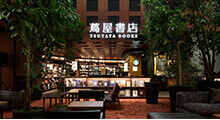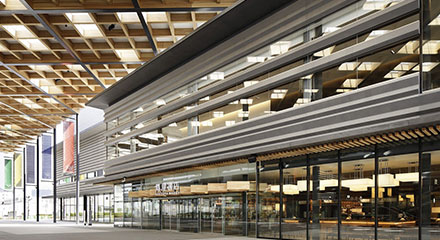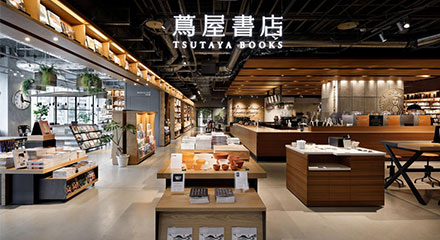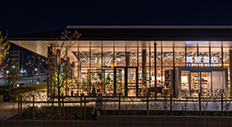[ARTIST NEWS] "Potters of Tokoname" to be held
This time, GINZA TSUTAYA BOOKS will be holding the "Potters of Tokoname" exhibition, which will feature 11 contemporary ceramic artists from Tokoname, Aichi Prefecture, a famous pottery production area known as one of the Six Ancient Kilns of Japan, as well as a special exhibition of works by Koie Ryoji, who passed away in August this year.
For about 900 years since the Middle Ages, Tokoname has been a pottery production center, with the kilns never letting the fires go out. Overlooking Ise Bay to the west, on a stage with smooth clay floors spreading across the hills, the techniques and sensibilities of many potters have brought about its history. In 1961, Chozaburo Ina founded the Tokoname City Ceramic Art Research Institute, the first research facility in the country to bear the name "ceramics." He preached, "The promotion of the pottery industry is the foundation of pottery. The goals of beauty and technique in pottery lead to pottery," and shaking up the pottery town with pottery marked a major turning point for Tokoname.
Advances in science and technology have created many options for how to make and sell pottery, encouraging the liberation of traditional production areas, and today there are more artists with their own studios than there are kilns. The diverse group of independent artists who lead Tokoname together with the kilns are shaping the pottery town of Tokoname.
At the venue, there will be more than 200 pieces ranging from everyday items such as sake cups and teapots to large objects such as large vases and ceramic dolls, all of which can be purchased. In addition, a talk show will be held on the first day, the 22nd (Sunday), from 4pm by exhibiting artists Akira Koie and Keisuke Hatanaka, along with philosopher Takashi Kurata.
*Chozaburo Ina (1890-1980)
Founder of Ina Seito Co., Ltd. (now LIXIL Corporation). Served as the first mayor of Tokoname City and made great efforts in the development and growth of Tokoname's modern ceramics industry.
Founder of Ina Seito Co., Ltd. (now LIXIL Corporation). Served as the first mayor of Tokoname City and made great efforts in the development and growth of Tokoname's modern ceramics industry.
*The leaflet distributed at the venue can be downloaded here. (6.17 MB)
Mamoru Ikai
Born into a Tokoname pottery family that makes bonsai pots, he learned the basics of pottery making at the Tokoname High School Industrial Ceramics Department. He also dug clay as an extracurricular activity and began making his own pottery. After graduating from high school, he became an apprentice to the third generation of Jozan, who had a connection to the family business, and learned the work of a craftsman. After three years, he became independent. He met many people both inside and outside the production area, including joining the Tokoname Creative Group, which brings together creators with different skills. He uses clay from the Chita Peninsula and other areas to mold everyday items such as cups, plates, teapots, and earthenware pots on a potter's wheel and fires them in an anagama kiln. He has long pursued forms that feel right in a place where he can immerse himself in his ideas and lives in his own life. When you meet the quiet clay objects he makes, they will tell you why they are so comfortable.

 Born and raised in Tokoname, he studied pottery at Tokoname High School's ceramics department. During university, he became an apprentice to teapot artist Murakoshi Fugetsu, who had studied under Living National Treasure Yamada Jozan III. He learned how to make Tokoname teapots, and became independent the year after graduating. His daily routine is to make clay using a method called elutriation, which has been used since the Edo period when the red clay teapot was invented. He puts the raw clay he has collected into a large jar filled with water, stirs it, and removes tree roots and other debris using a sieve. By repeating this process, he creates clay with only fine particles. The water is removed and the pot is left to rest for over a year before it is complete. The elegant shapes are not only backed by techniques such as wheel-throwing, but also come from collecting old teapots and teapots by artists every day, and examining them while drinking tea. He also plays tea ceremonies with his young child. For him, everything is a teapot.
Born and raised in Tokoname, he studied pottery at Tokoname High School's ceramics department. During university, he became an apprentice to teapot artist Murakoshi Fugetsu, who had studied under Living National Treasure Yamada Jozan III. He learned how to make Tokoname teapots, and became independent the year after graduating. His daily routine is to make clay using a method called elutriation, which has been used since the Edo period when the red clay teapot was invented. He puts the raw clay he has collected into a large jar filled with water, stirs it, and removes tree roots and other debris using a sieve. By repeating this process, he creates clay with only fine particles. The water is removed and the pot is left to rest for over a year before it is complete. The elegant shapes are not only backed by techniques such as wheel-throwing, but also come from collecting old teapots and teapots by artists every day, and examining them while drinking tea. He also plays tea ceremonies with his young child. For him, everything is a teapot.




Gafu Ito


Yushi Ito
Born into a teapot shop in Tokoname. He worked at Nanzan Touen, a manufacturer of flower vases, but wanted work that required skill, and chose the path of an artist. He studied craft design under Goro Tomimoto of Tomimoto Touen and Sakuzo Hineno, who teaches ceramic design in the pottery industry. He creates nerikomi yaki, characterized by the fluctuating lines and colored surfaces, inspired by two-dimensional works such as abstract paintings and posters. He bakes salt in a down-turned flame kiln, giving it a complex luster that does not melt completely. Although nerikomi and salt glaze are techniques and materials that have been used in Tokoname, he does not simply follow them, but reinterprets them to make them his own. There is no other reason why Hineno's motto, "When making something, it starts with an idea," is repeated over and over again, and the finished product is solid, other than the accumulation of the artist's ingenuity.



 Born in Tokyo. Moved to Yamanashi when he was in elementary school. While making two-dimensional works in the art club at high school, he learned about pottery. He liked old things and frequented antique shops and second-hand bookstores, and was shocked when he saw a catalog of Tang Sancai. He went on to university but dropped out after two years and attended a pottery class run by a Swiss calligrapher. In order to seriously study pottery, he headed west on his motorcycle and visited Tokoname, Shigaraki, and Karatsu. He met photographer Yuki Fujii, and through that connection he moved to Tokoname via Shigaraki. After working as a craftsman at Nanzan Touen, he became independent with the aim of becoming an artist. He packed his works in a light van and crossed the sea on a car ferry to Seoul for a solo exhibition. He then held solo exhibitions in Tokyo and other places. What he seeks in pottery is texture. Through repeated trial and error that sometimes deviates from theory, such as refining the clay and glazes and applying strong pressure to the kiln, he expresses the texture of stone and wood that he finds beautiful, and the colors of the sunset, in his pottery.
Born in Tokyo. Moved to Yamanashi when he was in elementary school. While making two-dimensional works in the art club at high school, he learned about pottery. He liked old things and frequented antique shops and second-hand bookstores, and was shocked when he saw a catalog of Tang Sancai. He went on to university but dropped out after two years and attended a pottery class run by a Swiss calligrapher. In order to seriously study pottery, he headed west on his motorcycle and visited Tokoname, Shigaraki, and Karatsu. He met photographer Yuki Fujii, and through that connection he moved to Tokoname via Shigaraki. After working as a craftsman at Nanzan Touen, he became independent with the aim of becoming an artist. He packed his works in a light van and crossed the sea on a car ferry to Seoul for a solo exhibition. He then held solo exhibitions in Tokyo and other places. What he seeks in pottery is texture. Through repeated trial and error that sometimes deviates from theory, such as refining the clay and glazes and applying strong pressure to the kiln, he expresses the texture of stone and wood that he finds beautiful, and the colors of the sunset, in his pottery.

 Born in Tokai City. After dropping out of university, she entered the Tokoname Ceramic Art Institute at her father's suggestion. After graduating, she worked as an apprentice to a ceramic artist and helped him with his production while also making pottery. A large porcelain bowl-shaped piece was selected for the Jury Prize at the Chozo Prize Ceramic Art Exhibition (selected by Koie Ryoji), and Koie commented that "I can hear music." Later, when she was working at a workshop in Spain, she dug a hole in the ground, poured soil into it, and made a round vessel, and realized that her series of works were rooted in the fact that she had been filled with the inner existence of these things, from the small depression in the entrance of her childhood home to the large jar in Tokoname, which repeatedly filled with water and dried up. She is convinced that the way in which the creator is fascinated and resolved by the imposing tension of the surfaces, the momentum of the curves, and the "inner space" that is formed by them is the same now as it was in the past.
Born in Tokai City. After dropping out of university, she entered the Tokoname Ceramic Art Institute at her father's suggestion. After graduating, she worked as an apprentice to a ceramic artist and helped him with his production while also making pottery. A large porcelain bowl-shaped piece was selected for the Jury Prize at the Chozo Prize Ceramic Art Exhibition (selected by Koie Ryoji), and Koie commented that "I can hear music." Later, when she was working at a workshop in Spain, she dug a hole in the ground, poured soil into it, and made a round vessel, and realized that her series of works were rooted in the fact that she had been filled with the inner existence of these things, from the small depression in the entrance of her childhood home to the large jar in Tokoname, which repeatedly filled with water and dried up. She is convinced that the way in which the creator is fascinated and resolved by the imposing tension of the surfaces, the momentum of the curves, and the "inner space" that is formed by them is the same now as it was in the past.

 Born in Tokoname. He began his involvement with pottery by helping his father, the ceramist Ryoji Koie, build a kiln. He participated in an excavation of an ancient medieval kiln in Tokoname, and upon seeing traces of medieval potters' handwriting and work on the excavated items, he reaffirmed that pottery could be made in Tokoname, and was convinced that this was a job he could do himself. Since then, he has learned the process by touching the clay directly with his hands. His pottery, born from his clay-first approach, is guided by straightforward shapes suited to the purpose, with the focus on the clay as a material. It is fun to look for the quiet, unobtrusive highlights that arise from primitive methods of making, and he develops an attachment to them. He continues to make pottery, applying his experiences to his work, traveling between kilns across national and regional borders.
Born in Tokoname. He began his involvement with pottery by helping his father, the ceramist Ryoji Koie, build a kiln. He participated in an excavation of an ancient medieval kiln in Tokoname, and upon seeing traces of medieval potters' handwriting and work on the excavated items, he reaffirmed that pottery could be made in Tokoname, and was convinced that this was a job he could do himself. Since then, he has learned the process by touching the clay directly with his hands. His pottery, born from his clay-first approach, is guided by straightforward shapes suited to the purpose, with the focus on the clay as a material. It is fun to look for the quiet, unobtrusive highlights that arise from primitive methods of making, and he develops an attachment to them. He continues to make pottery, applying his experiences to his work, traveling between kilns across national and regional borders.

 Born in Gunma Prefecture. Influenced by his mother, he became familiar with craftsmanship. In his third year of high school, he visited Aichi Prefectural University of the Arts and met Professor Masatoshi Sakagi, a ceramic designer, by chance. He was impressed by the way shapes were made using plaster molds in his laboratory, and the white pottery, and this was the beginning of his ceramics making. Since then, he has continued to make porcelain using plaster molds while still a student.
Born in Gunma Prefecture. Influenced by his mother, he became familiar with craftsmanship. In his third year of high school, he visited Aichi Prefectural University of the Arts and met Professor Masatoshi Sakagi, a ceramic designer, by chance. He was impressed by the way shapes were made using plaster molds in his laboratory, and the white pottery, and this was the beginning of his ceramics making. Since then, he has continued to make porcelain using plaster molds while still a student.
The seams between the molds, called "burrs," that occur during molding, are left as they are. There is no superiority or inferiority between hand-turned pottery on a potter's wheel and molded pottery, which are techniques created by people out of necessity. The pottery is fired and polished without glaze, and the sharp contours highlight the whiteness of the Seto porcelain clay itself. Standing against the brown Tokoname skyline, the unglazed porcelain is dignified.

 Born in Kochi. After graduating from university, he returned to Kochi and changed jobs several times. He started attending the nearest pottery class he found in the town directory, and after a month he met the potter Teppei Ono at a local event. He was invited to his home by Teppei Ono, the first potter he had ever recognized, and was attracted to his works and the collection of works by potter Ryo Aoki. He then studied at the Aichi Prefectural Ceramics Technical College in Seto, and after graduating he admired Yuji Muraki and helped him fire the kiln for six years.
Born in Kochi. After graduating from university, he returned to Kochi and changed jobs several times. He started attending the nearest pottery class he found in the town directory, and after a month he met the potter Teppei Ono at a local event. He was invited to his home by Teppei Ono, the first potter he had ever recognized, and was attracted to his works and the collection of works by potter Ryo Aoki. He then studied at the Aichi Prefectural Ceramics Technical College in Seto, and after graduating he admired Yuji Muraki and helped him fire the kiln for six years.
He fell in love with Kohiki and Mishima through the people he met and the works he made, and even after moving his studio to Tokoname, he continues to pursue his roots. Without being obsessed with the originals, his molding skills and sense of color create modern pottery with a bright and energetic presence. He told me with a smile about how he started making wood-fired kilns and Instagram.

 Born in Nagoya City, he loved drawing and became familiar with art from an early age.
Born in Nagoya City, he loved drawing and became familiar with art from an early age.
He entered the Tokoname Ceramic Art Institute in order to work in the field of ceramics, which involves working directly with the materials. After graduating, he continued to work part-time at a restaurant while continuing to make ceramics. He says, "I honestly bake everything that comes to mind," and follows his intuition above all else.
He divides his works into "austere" and "colorful", the former packed with speed and momentum, and the latter with the theme of creating a worldview that seems to have jumped out of an anime. He clowns around and says that his works are "strong in their own way", but the fact that chefs are constantly ordering his dishes is proof that they are good to look at, good to serve, and good to turn.

 Born in Tokoname. The art class she attended as a child was located on the Yakimono Sanpo-michi, a street lined with pottery factories, and she would watch the artisans making pottery. After graduating from high school, she went on to study at Okinawa Prefectural University of Arts with the aim of becoming a sculptor. She fell in love with Okinawa, where foreign cultures such as Thailand and China co-exist. She went on to graduate school at the University of the Arts in Kyoto, but was discouraged by contemporary art and returned to Tokoname to continue making pottery. Looking back, she says she was influenced by Paul Klee's drawings, the ceramic sculptor Shoji Matsushita, and her husband, who is a sculptor. She ignores the history of Tokoname ceramic sculpture, which she learned and built up through Western figurative sculpture, and creates ceramic sculptures of people (Buddhas), animals (sacred beasts), plants, and other things that come to her mind. The warmth of life resides in the generous clay lumps she creates.
Born in Tokoname. The art class she attended as a child was located on the Yakimono Sanpo-michi, a street lined with pottery factories, and she would watch the artisans making pottery. After graduating from high school, she went on to study at Okinawa Prefectural University of Arts with the aim of becoming a sculptor. She fell in love with Okinawa, where foreign cultures such as Thailand and China co-exist. She went on to graduate school at the University of the Arts in Kyoto, but was discouraged by contemporary art and returned to Tokoname to continue making pottery. Looking back, she says she was influenced by Paul Klee's drawings, the ceramic sculptor Shoji Matsushita, and her husband, who is a sculptor. She ignores the history of Tokoname ceramic sculpture, which she learned and built up through Western figurative sculpture, and creates ceramic sculptures of people (Buddhas), animals (sacred beasts), plants, and other things that come to her mind. The warmth of life resides in the generous clay lumps she creates.

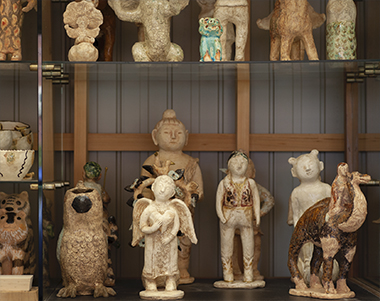 Born in Tokoname.
Born in Tokoname.
He began working part-time at a clay pipe factory during the summer holidays in his fifth year of elementary school. In his second year at Aichi Prefectural Tokoname High School, he began visiting old kiln sites in Tokoname in search of clay. He joined Nippon Tile Block Co., Ltd., where he was involved in the manufacture, construction, and research of architectural ceramic products. When the Tokoname City Ceramic Art Research Institute was established, he joined the institute and pursued a career in ceramics. After leaving the institute, he brought a breath of fresh air to the ceramics world with numerous works submitted to public exhibitions and special exhibitions at art museums. He became famous both at home and abroad as a ceramic artist and contemporary artist. Since the 1990s, he has taught at Aichi Prefectural University of the Arts and has actively mentored students, holding workshops all over the world.

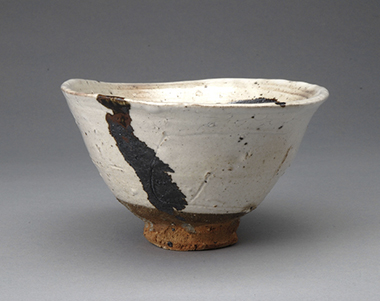


Tatsuo Umehara
Born into the Umehara family, a family of teapot craftsmen in Tokoname, he worked for an automobile manufacturing company before taking on the responsibility of the entire manufacturing process and embarking on the path of a teapot craftsman.
He apprenticed under his uncle Umehara Shoji (Shoryu), and four years later went independent to become the third generation Hokuryu. Hokuryu teapot making begins with refined clay, then the body, spout, handle, and lid are hand-turned to form, and the rest of the parts, including the tea strainer, are glued together before being fired to finish. He mass-produces around 800 teapots a month by himself. The firm, round shape inherited from his master reflects his pursuit of the teapot as a tool. When you hold it in your hand, you're surprised at how light and thin it is, but you also feel a sense of familiarity and security. The price, which allows it to be used every day at home without hesitation, is likely one of the reasons for this. He enjoys his work, saying "every day is art and craft," and even during the interview he continued to work at the potter's wheel without stopping, making teapots for everyday use.
He apprenticed under his uncle Umehara Shoji (Shoryu), and four years later went independent to become the third generation Hokuryu. Hokuryu teapot making begins with refined clay, then the body, spout, handle, and lid are hand-turned to form, and the rest of the parts, including the tea strainer, are glued together before being fired to finish. He mass-produces around 800 teapots a month by himself. The firm, round shape inherited from his master reflects his pursuit of the teapot as a tool. When you hold it in your hand, you're surprised at how light and thin it is, but you also feel a sense of familiarity and security. The price, which allows it to be used every day at home without hesitation, is likely one of the reasons for this. He enjoys his work, saying "every day is art and craft," and even during the interview he continued to work at the potter's wheel without stopping, making teapots for everyday use.


Koichi Ohara


Mami Kato


Akira Koie


Natsumi Koike
The seams between the molds, called "burrs," that occur during molding, are left as they are. There is no superiority or inferiority between hand-turned pottery on a potter's wheel and molded pottery, which are techniques created by people out of necessity. The pottery is fired and polished without glaze, and the sharp contours highlight the whiteness of the Seto porcelain clay itself. Standing against the brown Tokoname skyline, the unglazed porcelain is dignified.


Masahiro Takataya
He fell in love with Kohiki and Mishima through the people he met and the works he made, and even after moving his studio to Tokoname, he continues to pursue his roots. Without being obsessed with the originals, his molding skills and sense of color create modern pottery with a bright and energetic presence. He told me with a smile about how he started making wood-fired kilns and Instagram.


Keisuke Hatanaka
He entered the Tokoname Ceramic Art Institute in order to work in the field of ceramics, which involves working directly with the materials. After graduating, he continued to work part-time at a restaurant while continuing to make ceramics. He says, "I honestly bake everything that comes to mind," and follows his intuition above all else.
He divides his works into "austere" and "colorful", the former packed with speed and momentum, and the latter with the theme of creating a worldview that seems to have jumped out of an anime. He clowns around and says that his works are "strong in their own way", but the fact that chefs are constantly ordering his dishes is proof that they are good to look at, good to serve, and good to turn.


Utako Hamahiga


Ryoji Koie (Special exhibit)
He began working part-time at a clay pipe factory during the summer holidays in his fifth year of elementary school. In his second year at Aichi Prefectural Tokoname High School, he began visiting old kiln sites in Tokoname in search of clay. He joined Nippon Tile Block Co., Ltd., where he was involved in the manufacture, construction, and research of architectural ceramic products. When the Tokoname City Ceramic Art Research Institute was established, he joined the institute and pursued a career in ceramics. After leaving the institute, he brought a breath of fresh air to the ceramics world with numerous works submitted to public exhibitions and special exhibitions at art museums. He became famous both at home and abroad as a ceramic artist and contemporary artist. Since the 1990s, he has taught at Aichi Prefectural University of the Arts and has actively mentored students, holding workshops all over the world.


Event Information
Date: November 22, 2020 (Sun)- November 30, 2020 (Mon)
Time: Please check our website.
Time: Please check our website.
Location: GINZA ATRIUM (event space)
Price: Free
Organized by: GINZA TSUTAYA BOOKS
Price: Free
Organized by: GINZA TSUTAYA BOOKS
Cooperation: GALLERY KIKAN Supervision: Koji Takahashi



